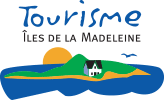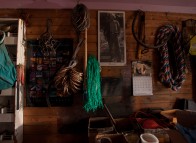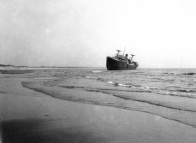


The Mi'kmaq First Nations poetically named the archipelago "Menagoesenog", meaning "islands swept by the wave". Long before the arrival of Europeans, they roamed these lands in search of fish, seals, and sea cows. On June 25, 1534, Jacques Cartier, in his logbook, named the Islands "Araynes", derived from the Latin "arena", meaning sand. He first approached the Rocher-aux-Oiseaux, which he named "Isle Margaulx" because of the numerous birds found there, and then Brion Island.
In 1629, Samuel de Champlain marked "La Magdeleine" on a map at the location of Havre-Aubert Island. It is also said that the name "Îles de la Madeleine" may have been given to the archipelago only in 1663 by François Doublet de Honfleur, the Islands' concessionaire, in honor of his wife, Madeleine Fontaine.
In 1755, the destiny of the Acadians took a tragic turn. This was the "Grand dérangement" (Great Upheaval).
A few individuals escaped deportation and arrived at the Îles de la Madeleine under the harsh control of merchant Richard Gridley. They hunted walruses and operated the Islands' fisheries for him.

In 1789, following the French Revolution, other Acadian families from Saint-Pierre and Miquelon joined them under the leadership of Abbé Jean-Baptiste Allain, who established the first preserved register. This marked the true beginning of the colonization of the Îles de la Madeleine. In 1763, the Islands were initially annexed to Newfoundland but came under Quebec's jurisdiction in 1774 through the Quebec Act.
In 1798, Isaac Coffin obtained the concession and required the Madelinots to pay rents to occupy the lands they had cleared and lived on for over 25 years. The hardships and injustices the Madelinots faced at the time explain their emigration to new lands, where they founded several villages along the North Shore, such as Blanc-Sablon (1854), Havre-Saint-Pierre, Natashquan (1855), and Sept-Îles (1872). It was not until 1895 that a Quebec law allowed the Madelinots to buy back their lands. From that moment, they focused on overcoming their difficulties and striving for self-sufficiency.
The Madelinots, as fishers and sailors, certainly experienced the joys of maritime life but also its challenges. Over 400 shipwrecks have been reported in the Îles de la Madeleine. Most often, these were foreign ships navigating around the archipelago and driven ashore by storms. On occasion, shipwreck survivors chose to rebuild their lives in the archipelago.






Over time, improved communications significantly reduced the isolation of the islanders, who have preserved a unique way of life. As of 2024, the population totaled 12,937, of whom approximately 5% are English speakers, primarily of Irish and Scottish descent.